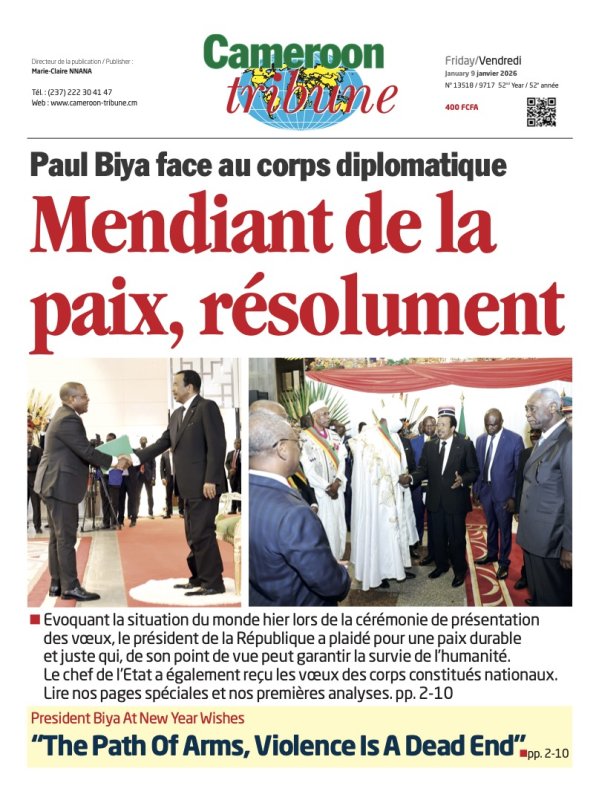Sub-regional Integration: Hoperaising Infrastructure
- Par Godlove BAINKONG
- 17 Apr 2023 10:40
- 0 Likes
So much has been said over the years about integration in the Central African Economic and Monetary Community (CEMAC), with little to show in terms of advancement. While four of the six States of the union have shown no resistance to the entry and exit of their peers from other countries, two continue to hold tight to their sovereignty to the extent of seeing others as plunderers who should not be allowed to access their territory; in what many have qualified as their fear of “invasion”. Complex indeed in a context of singsong integration! However, evolutions in integrative infrastructure projects raise hopes that although CEMAC incorporation might have almost been at snail-pace, it would be too early to qualify it as total fiasco. Like President Paul Biya said during the March 17, 2023 15th Ordinary Session of the Conference of Heads of State of the Central African Economic and Monetary Community (CEMAC) that held in Yaounde, the well-being of the peoples, among others, hinges on a harmonious integration of the national economies through the implementation of transformative and integrative projects. From observation, the projects are seemingly on a good footing; raising hopes of better days ahead, provided stakeholders continue. For instance, the construction of the bridge over the Logone River linking Yagoua (Cameroon) and Bongor (Chad) is progressing satisfactorily. In effect, field reports show that the physical progress of the project was at 43.75% over a week ago? According to the forecasts of the contracting team, it is expected that 60% of the work will be completed by 2023 and completion hopefully in 2024, all things being equal. Technically, the project consists in the construction of a new bridge over the Logone River, between the chief towns of the Mayo Boneye Division in Bongor in Chad and the Mayo-Danay Division in Yagoua in Cameroon. Its factsheet details that the infrastructure under construction has a length of 620 ml and access roads of 14.2 km, divided into 7.4 km on the Chad side and 6.8 km on the Cameroon side. It is financed with the support of the African Development Bank, the European Union and the State of Cameroon on the Cameroon side. Promising news of course! This comes to add to the already functional international Cross River Bridge boosting connectivity and socio-economic integration between Cameroon and Nigeria. In effect, the 408-metre bridge, is one of the components of the transport facilitation programme on the Bamenda-Mamfe-Ekok (Cameroon) and Mfum-AbakalikiEnugu (Nigeria) corridor. Since inauguration on 3 November, 2022, the infrastructure has greatly shortened the distance between Nigeria and Cameroon and is expected to significantly increase integration, commercial exchanges, movement of goods and people between the Economic Community of West African States and Economic Community of Central African States. A veritable contributing factor to facilitating the much-trumpeted African Continental Free Trade Area. To these should equally be added the multinational Sangmelima-Ouesso road that links Cameroon and Congo and interconnects the two peoples with all what such brings in terms of boosting trade as well as enhancing people-to-people relationship. Evidently, this is part of the second-generation Regional Economic Programme which is centred on a portfolio of priority integrative projects susceptible to fast-track CEMAC’s physical and trade integration. While the first projects of that nature have been finalised for some and are underway for others, the Central African sub-region needs to go an extra mile to ensure adequate funding for other promising ventures. For the period 2023- 2028, some new so-called second-generation projects should be launched. For instance, in order to facilitate physical integration and the free movement of goods and people, there is an envisaged development of the Pointe-Noire-Brazzaville-OuessoBangui-N’Djamena corridor (Phase 2); the development and tarring of the Kelo-Pala-Léré-Cameroon border road (phase 2) between Chad and Cameroon and the development and pavement of the Kougouleu-Medouneu-Equatorial Guinea border road over a distance of 168 km (Gabon-Equatorial Guinea). There is also the construction of the extension of the NgaoundereN’Djamena railway; the construction of access roads to the Brazzaville-Kinshasa road-rail bridge on the Congo River as well as river and port facilities for navigation on the Congo River and its tributaries. The people of Cameroon and Equatorial Guinea are also looking forward to the construction of a bridge over River Ntem to ensure security and...
Cet article complet est réservé aux abonnés
Déjà abonné ? Identifiez-vous >
Accédez en illimité à Cameroon Tribune Digital à partir de 26250 FCFA
Je M'abonne1 minute suffit pour vous abonner à Cameroon Tribune Digital !
- Votre numéro spécial cameroon-tribune en version numérique
- Des encarts
- Des appels d'offres exclusives
- D'avant-première (accès 24h avant la publication)
- Des éditions consultables sur tous supports (smartphone, tablettes, PC)











Commentaires